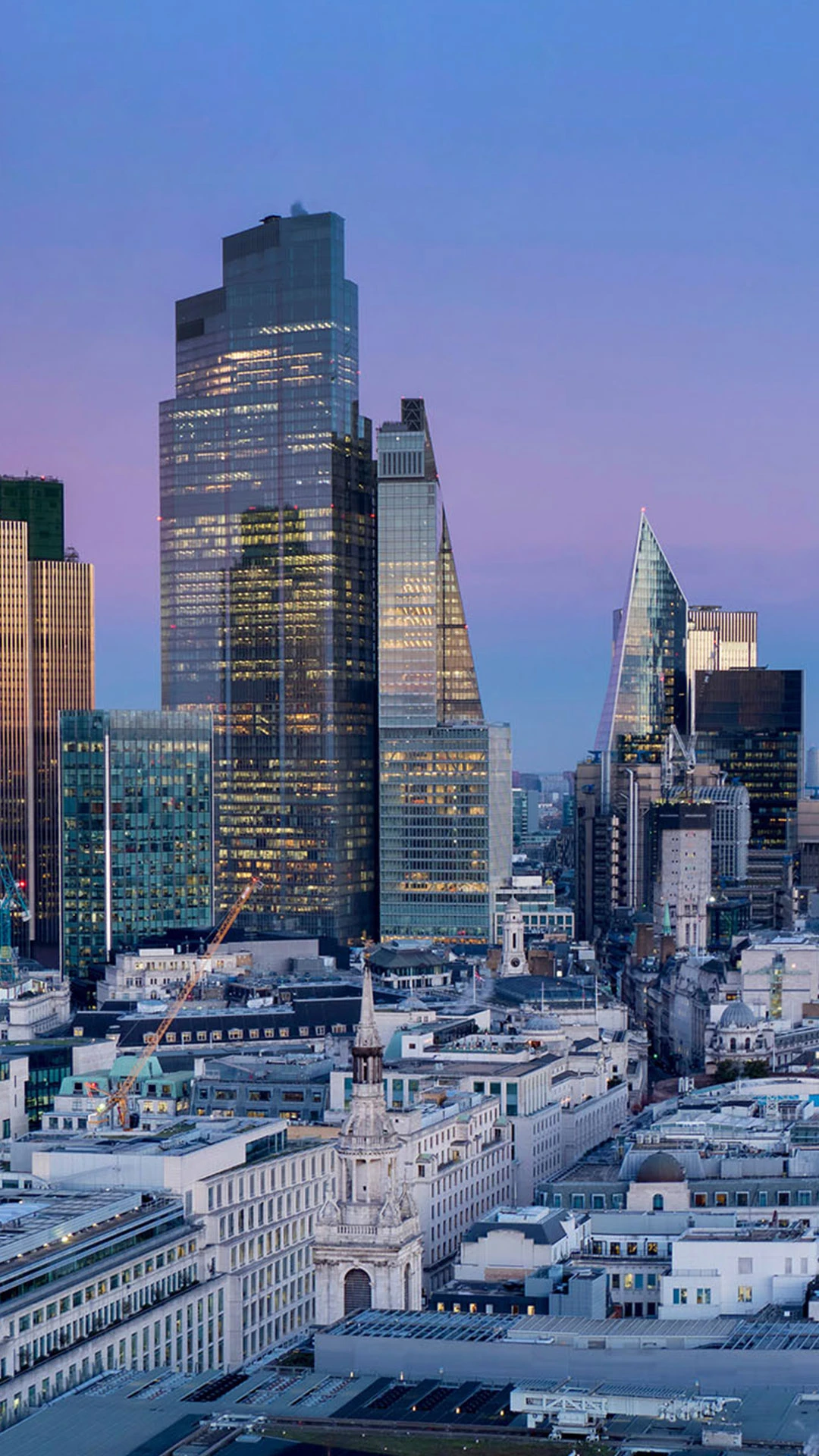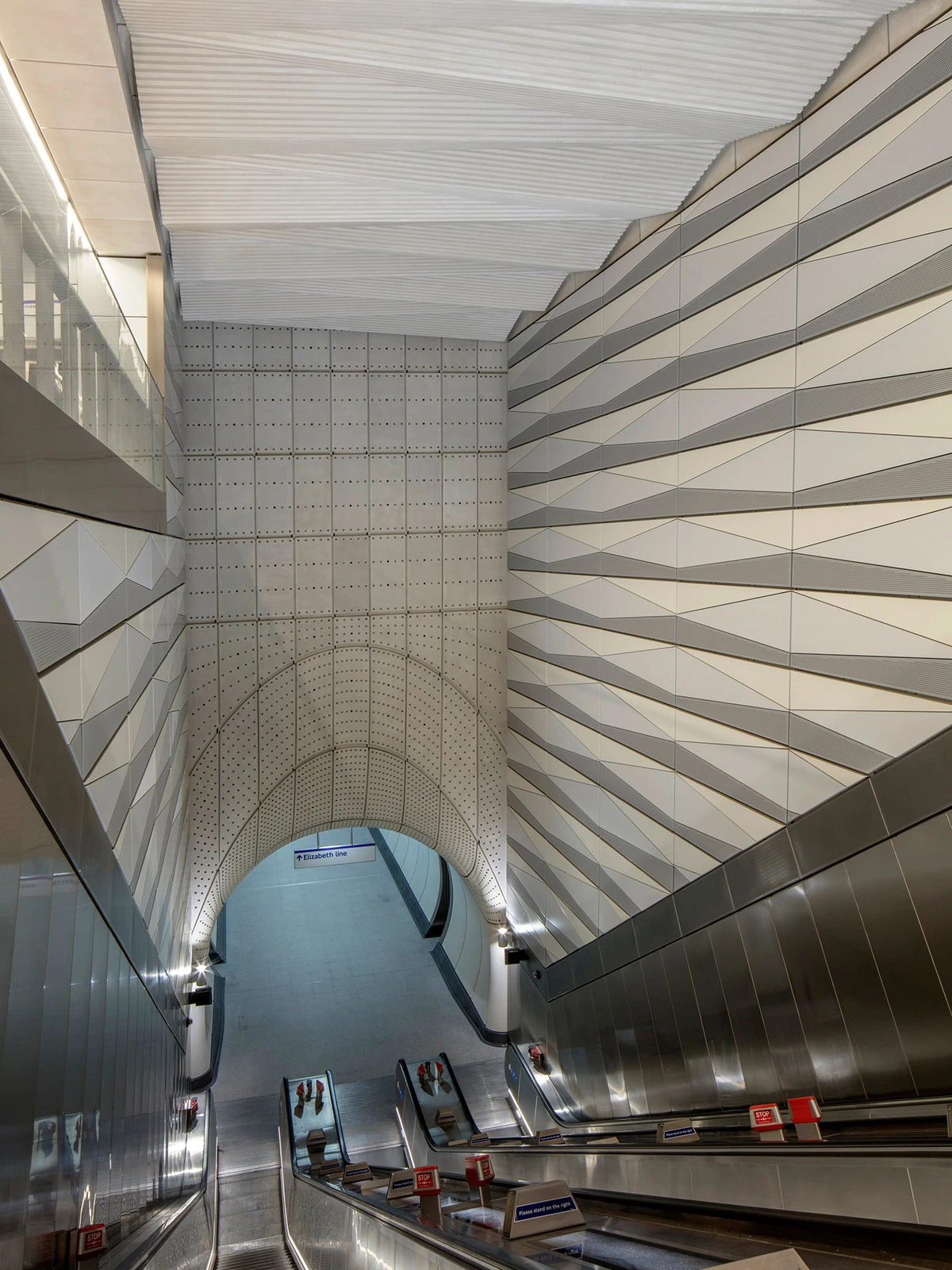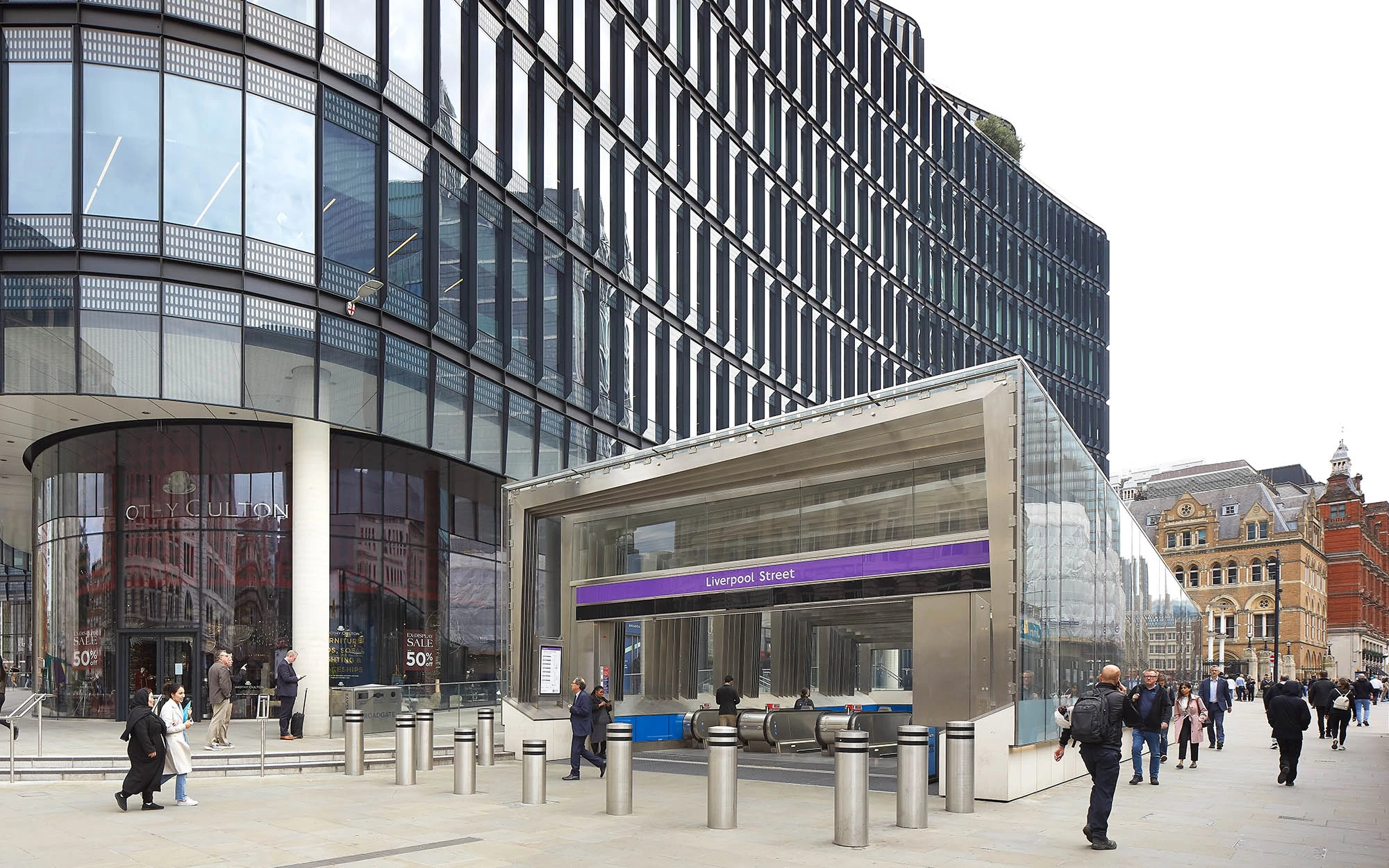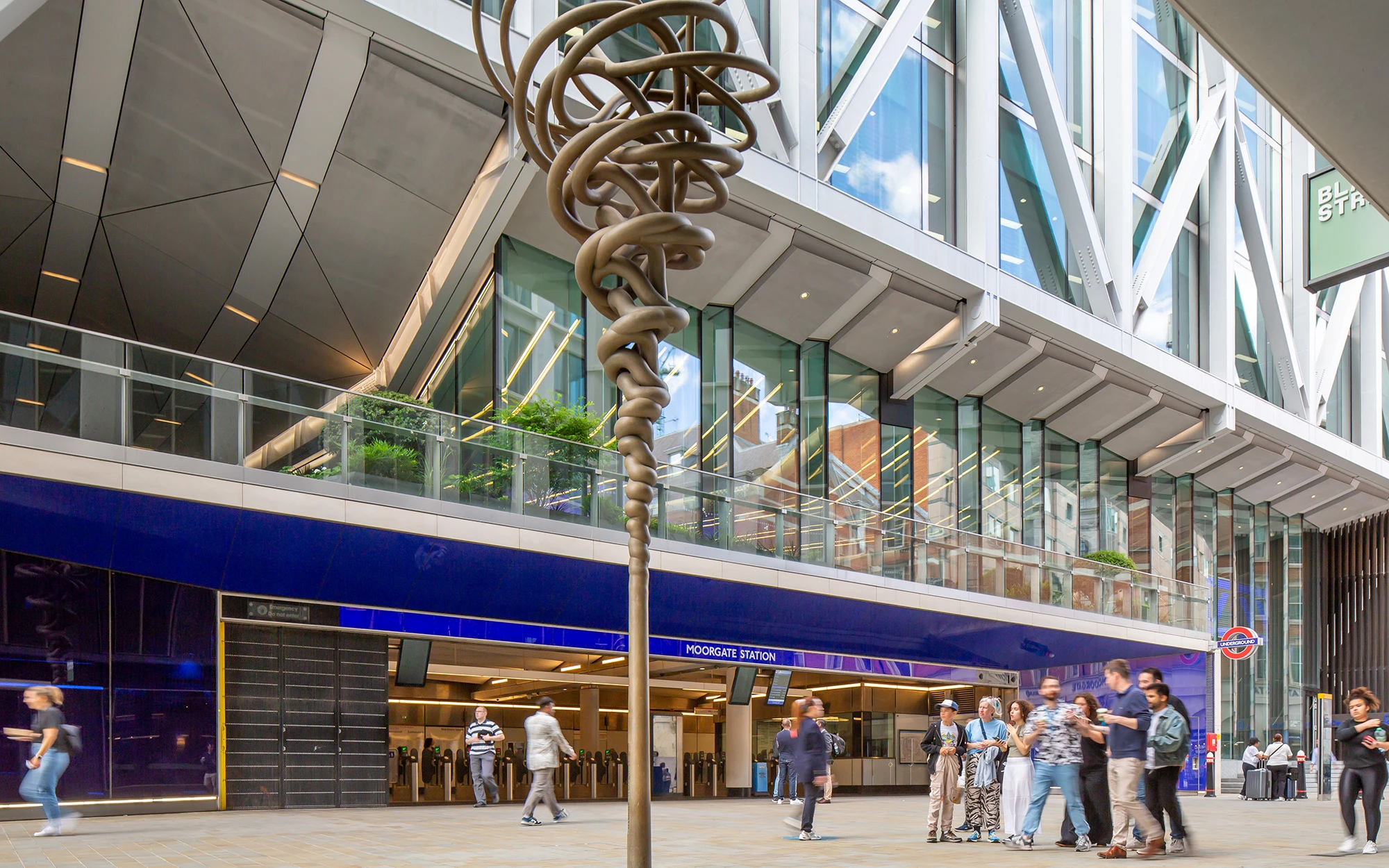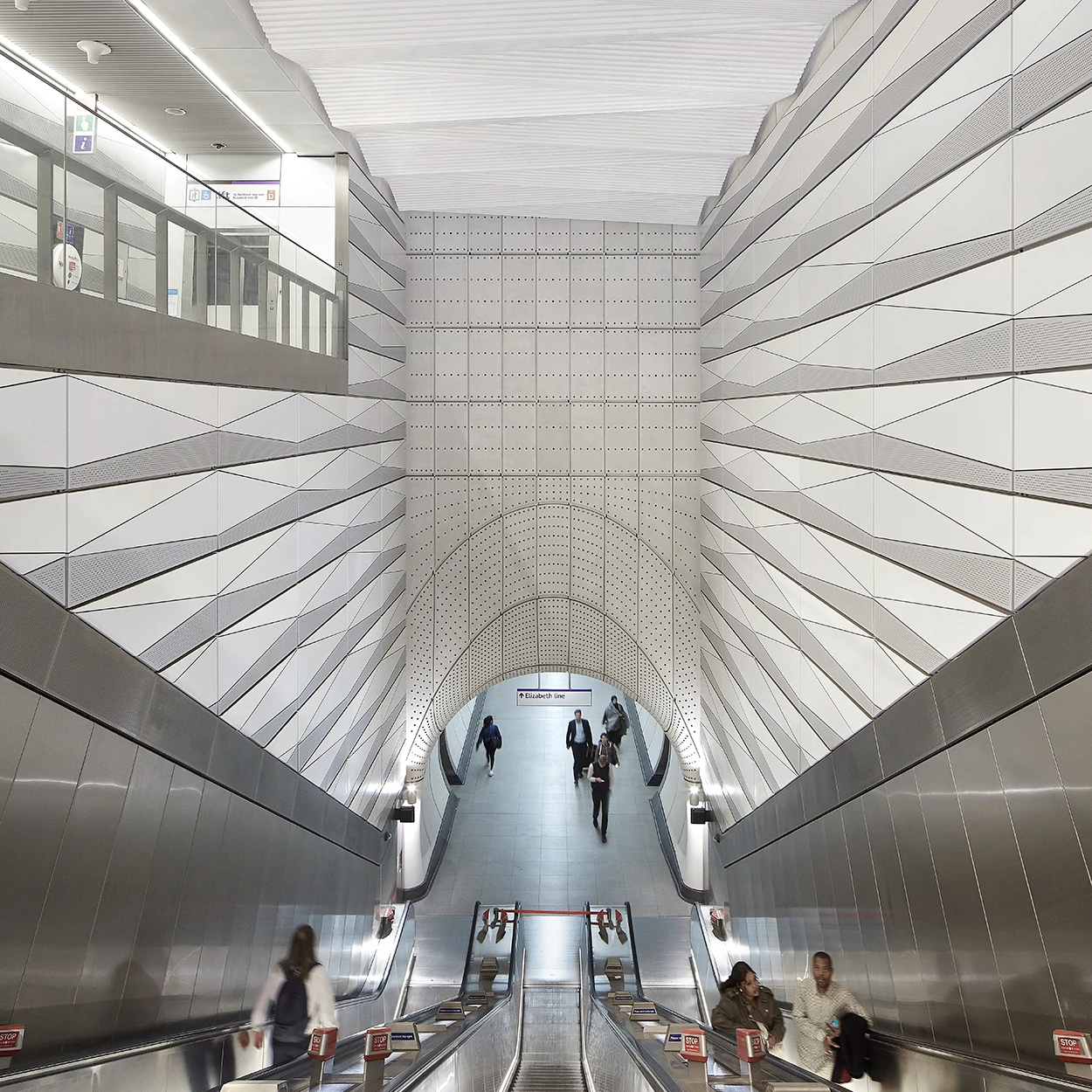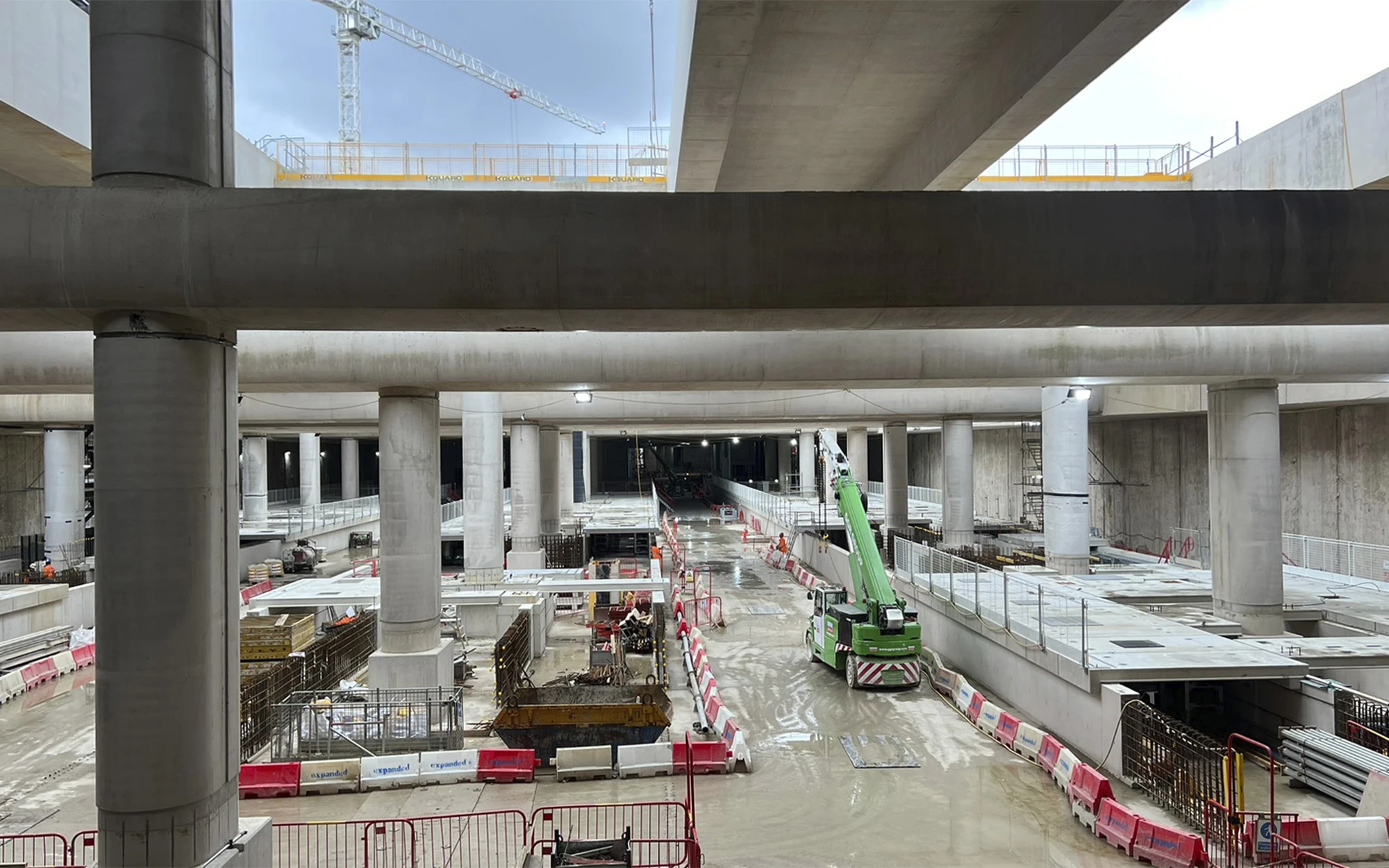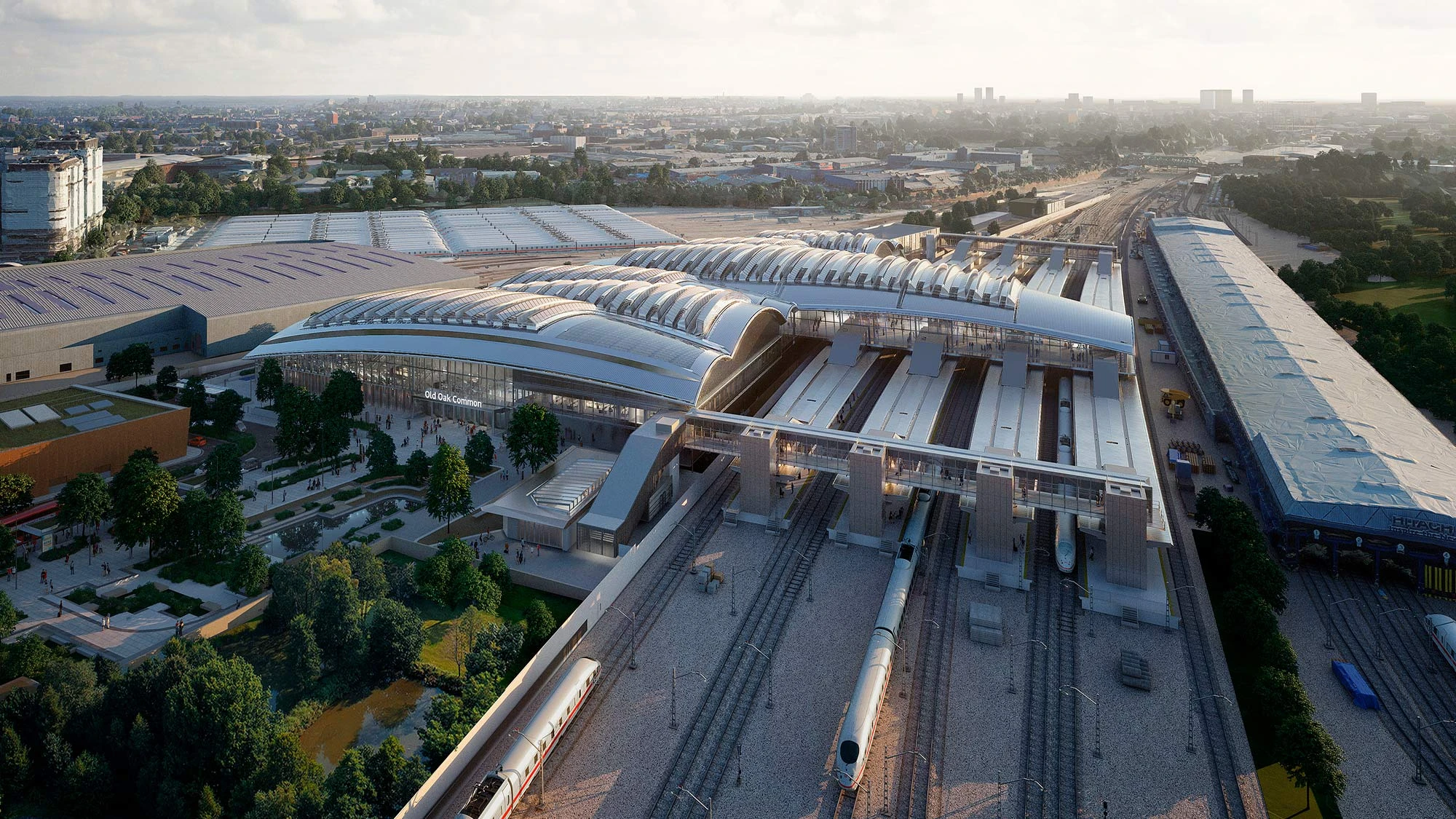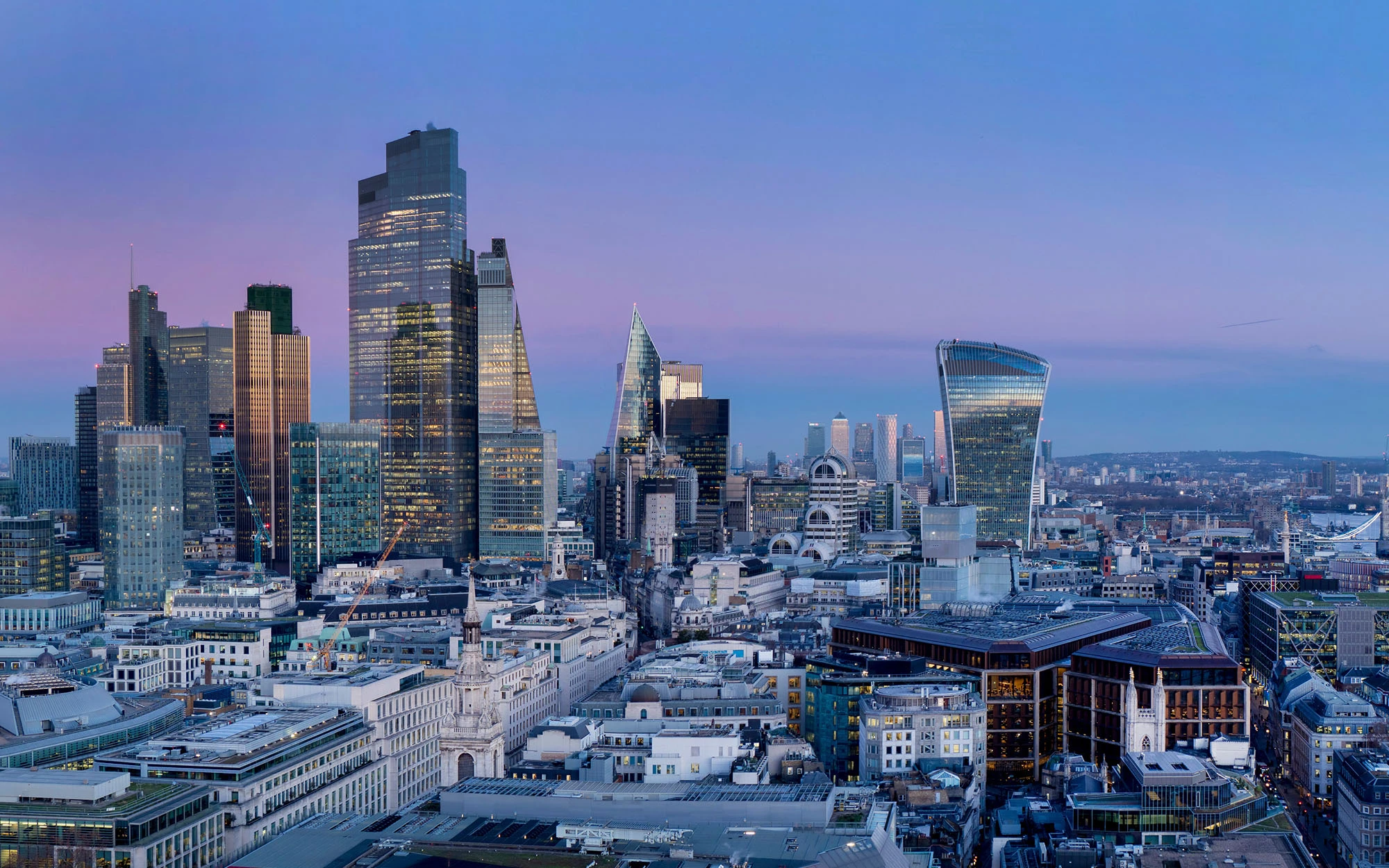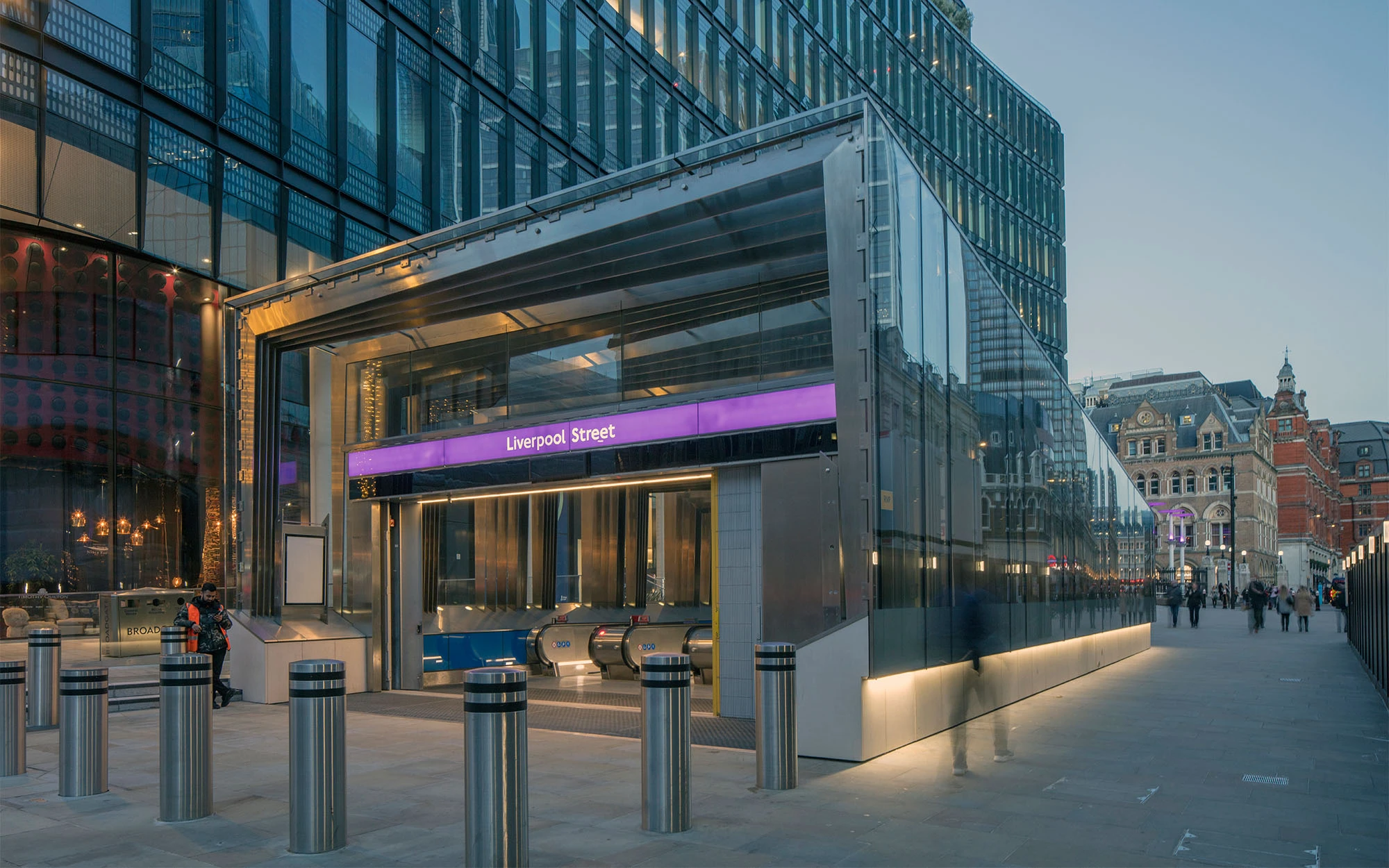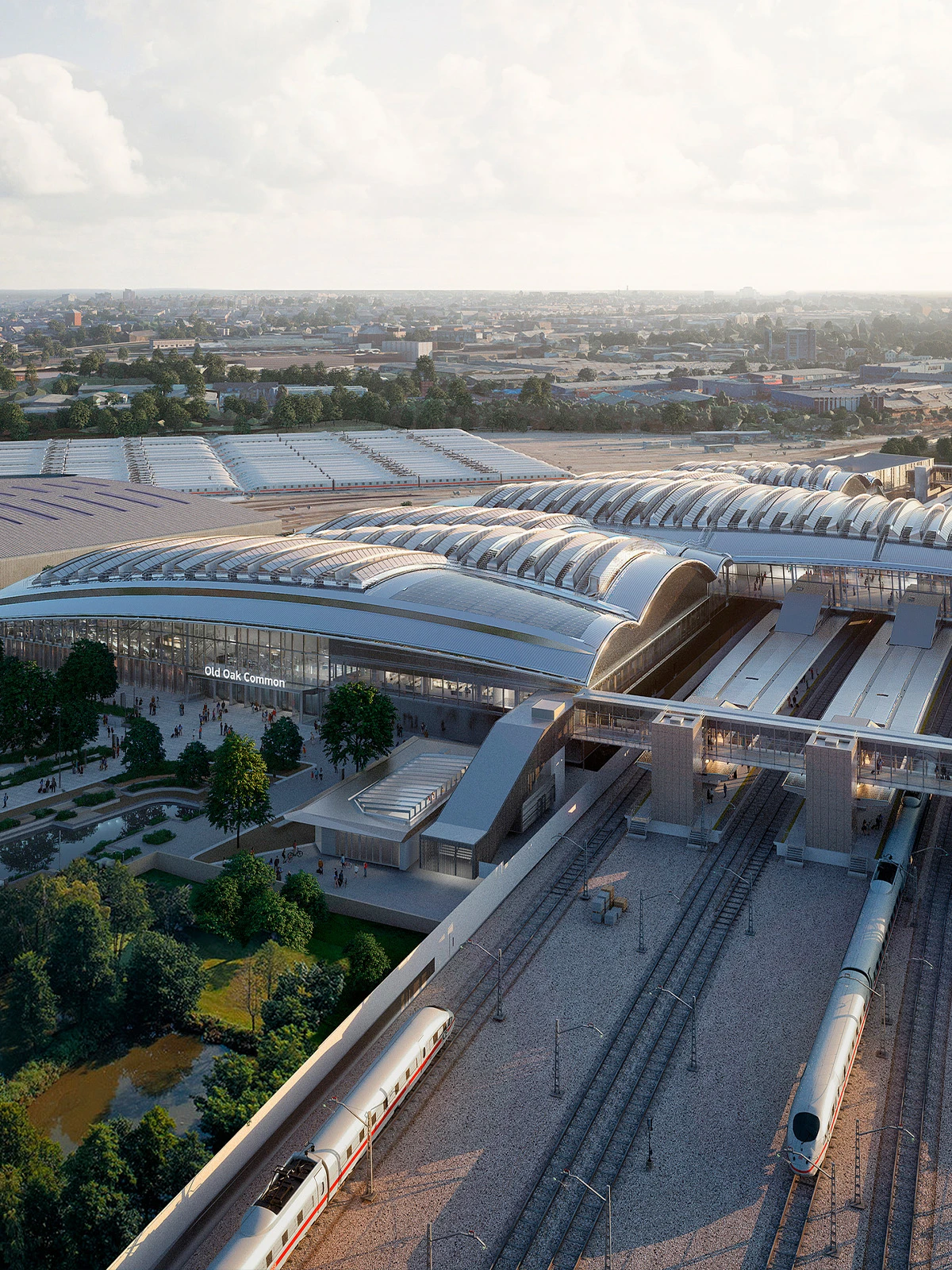
Architecture’s role in transport and infrastructure can be undervalued or seen as a final flourish.
Predominantly engineering-led, infrastructure projects do not always include architectural input at their early stages and, as such, are regularly overlooked by the architectural community, even though they are among the most public-facing. Rarely recognised in architectural awards, it was gratifying to see a major transport project – London’s Elizabeth Line - win the RIBA Stirling Prize in 2024. The award celebrated the deep collaboration required to deliver coherent stations embedded within their contexts.
At Liverpool Street Station, WilkinsonEyre maintained operations at Moorgate Station while integrating a second ticket hall beneath a road, with an entrance constrained by limited pavement space. In this project, as in all our infrastructure work, our critical focus was on human-centred design. For WilkinsonEyre, this means creating design that is:
Our projects at Old Oak Common in London, for CIBC in Toronto, and the Elizabeth Line in London all serve to highlight the societal benefits of well-designed transport systems. With the UK government’s pro-development agenda and their prioritisation of major infrastructure, now is the time to demonstrate the value of investing in transport to build sustainable cities.
The Longterm Benefits of Infrastructure
Infrastructure is the backbone of growth, regeneration and levelling up. When successful, its influence extends far beyond the red line. Stratford Station, the terminus of the Jubilee Line Extension delivered by the practice in 1997, was one of the projects that marked WilkinsonEyre’s ability to think about architecture in urban, strategic and engineering-aware terms. It became the keystone of regeneration and growth in Stratford, and the first step in transforming this part of east London into the vibrant area it is today.
The benefits of infrastructure take time to manifest, and Stratford offers a great example of this. Regeneration and growth require time and flexibility, qualities that infrastructure must support in order to respond to market forces, evolving needs, and a changing society where social transformation is a key driver of design. These projects require patience, as the benefits are not always immediate, predictable, or easily quantifiable.
Permeability is a key consideration for all major rail projects, and the ability to accommodate future connections and routes is vital to maximising long-term benefits. In Stratford, these broader benefits were realised through thoughtful transport planning and masterplanning. Local intermodal connections to the adjacent bus station, and the flexibility to expand the station, enabled wider development and long-term growth.
In the case of the Elizabeth Line the unprecedented challenges faced by the high street and wider economy in the post-pandemic era, including the shift to hybrid working and the decentralisation of urban centres, have dampened some of the project’s anticipated benefits.
Time will tell if one of the UK’s current major infrastructure projects, HS2, will fully succeed. Whilst understandable, the curtailment of the line does mean that potential benefits and wider impact of such infrastructure are significantly reduced. This, because the line and its speed are only part of the story: like a tree, the railway is the main stem, but much of the value, growth, and contribution to the wider ecosystem comes from the branches, leaves, fruit and flowers it supports, along with the secondary benefits these enable, such as fauna and propagation.
Thinking Beyond the Red Line
Also essential to good infrastructure design is the ability to think beyond the red line: understanding a project’s wider community impact helps design teams to better identify opportunities and assess cost, risk and value.
Post-pandemic shifts in travel and work patterns highlight the urgency of planning beyond infrastructure alone.
The 15-minute city model, with transport hubs at its core, supports sustainable travel, social mobility and better access to jobs, homes, healthcare and education.
As people reconsider work-life balance, convenient, high-quality journeys are essential to draw them back to urban centres for work and, in turn, to the evolving high street. This need has been underscored by Kelly Cleveland, Head of Real Estate and Investment at British Land: “You can have a fantastic office building, but if it’s 10 minutes’ walk from good public transport, you won’t get the £120 rents.”
Part of the ‘high quality’ journey are transport nodes which offer more than transit. The Tampines Hub in Singapore by DP Architects, offers a great example of this - integrating transport, a library, sports, education, retail and F&B into a community anchor. It also provides broadband, social and learning spaces that foster in-person interaction and a sense of community. All of these elements also support the belonging, pride and ownership that are key to tackling anti-social behaviour and supporting local economies.
Designing for People
So how do we ensure that infrastructure is truly human-centric? For WilkinsonEyre, this begins with understanding who we are designing for. While these projects focus on customers, they also involve staff and are frequently placed within existing communities. These imposed relationships must be carefully considered.
We believe good design is not about decoration. It is about optimising core elements while minimising cost, material use and carbon, reducing temporary works, maintenance and operational costs, while
improving safety. One such core element is concrete: often the UK's material of choice due to longevity and maintenance considerations, it is the default option for infrastructure. It can, however, be overwhelming in large volumes, compromising the human experience. We believe that this visual impact can be tempered by adopting a more collaborative and architectural design approach to these elements. Recent examples of this include the modular precast soffits at Liverpool Street Station. These panels were designed as permanent formwork, reducing waste associated with temporary construction. In both ticket halls, where ceiling heights are extremely limited, we designed a folding ceiling plane to soften the feeling of compression that a flat, monolithic ceiling might have created. This effect is further enhanced by a ribbed surface pattern, which also improves acoustics.
At Old Oak Common, within the high-speed box, the visual impact of large-scale concrete and the risk of a continuous, oppressive ceiling effect was recognised early. We worked closely with engineers and contractors to shape key visual surfaces with subtle curvature. These forms catch light to soften the concrete’s mass. Stadium columns were also curved to reduce visual weight and improve sightlines. Clear articulation of junctions between vertical and horizontal elements further broke down the scale, giving the structure a more human feel.
Urban realm and landscape design make an enormous contribution, seamlessly linking different elements. Often, it is the smallest intervention - lighting, planting, seating, or a simple phone charger - that have the greatest impact by improving the everyday human experience. Creating welcoming, inclusive spaces where people from all walks of life feel invited to come in, sit down, spend time, and take ownership, is central to building community and civic pride.
Balancing Technical, Political and Economic Realities
The best infrastructure designers understand how to balance technical, political and economic realities, and can contribute meaningfully from the outset. Often the barriers to delivering well-designed infrastructure projects are systemic, with designers finding their ability to deliver holistic and optimal solutions regularly limited by fragmented funding streams, disconnected timelines, and conflicting targets across different bodies working on a single project.
Early, non-engineering collaboration with masterplanners, architects, and landscape designers can support forward-thinking by helping to make the value of infrastructure more tangible and relatable - shaping a positive vision for these projects and communicating their relevance to a wider audience. This, in turn, can support public and community engagement, ease the planning process, and build stronger advocacy.
Forward thinking and planning in this way is essential to informed decision-making, along with realistic early-stage reporting of project costs and impacts. These steps are necessary to avoid the pattern of rising costs, delays, or the dilution of the original vision for a project - factors often heavily influenced by political cycles. Major transport and infrastructure projects represent a once-in-a-generation opportunity: if we are to fully realise their benefits, our planning and governance processes must be more attuned to this responsibility and potential.
